In: Library
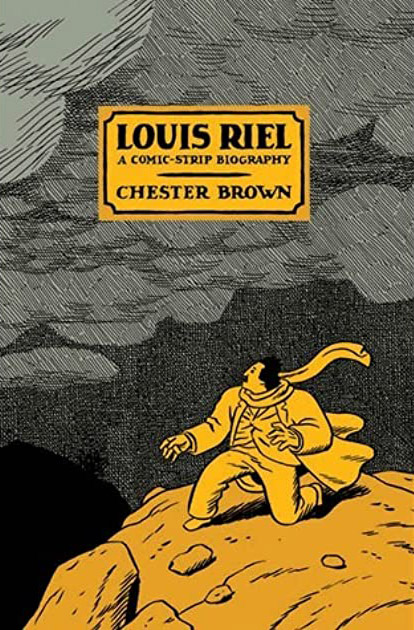
Louis Riel | Chester Brown, 1999 – 2003
February 23, 2022Louis Riel | Chester Brown, 1999 – 2003
Drawn & Quarterly, 2003
It seems an appropriate time to revisit Chester Brown’s excellent graphic novel Louis Riel (A Comic – Strip Biography), with Louis Riel Day having recently passed. I also say this not just due to recent domestic terrorism in Ottawa, but also as when I was living in Saskatoon, with a statue of Riel’s ally Gabriel Dumont prominently installed near the South Saskatchewan River, the reality of contested narratives about history was necessary to consider. An ongoing debate in Niagara, about a statue of a soldier glorifying the North-West Rebellion being removed from St. Catharines city hall, indicates this isn’t solely a regional concern.
More to this point: an exhibition at the now defunct Mendel Art Gallery a few years ago, on the work of James Henderson, displayed a full scale portrait of the judge who presided over Riel’s ‘trial’, where his execution was a foregone conclusion, and this fact was – still – not particularly welcomed when imparted to various tours and visitors.
“Chester Brown reinvents the comic-book medium to create the critically acclaimed historical biography Louis Riel, winning the Harvey Awards for best writing and best graphic novel for his compelling, meticulous, and dispassionate retelling of the charismatic, and perhaps insane, nineteenth-century Métis leader. Brown coolly documents with dramatic subtlety the violent rebellion on the Canadian prairie led by Riel, who some regard a martyr who died in the name of freedom, while others consider him a treacherous murderer.” (from here)
One of many fine publications from Drawn & Quarterly, this is one of a number of Brown’s excellent comics, and has been cited, along with Jeff Lemire (with his anthology Essex County) as an example of how ‘comics’ in Canada are engaging with historical narratives that are very relevant today.
Minimalist in format, this text fills in gaps that many of us were left with, studying history in school. Several years ago, in conversation with people from various parts of Canada, it was telling that Riel had been demonized in some historical accounts, completely ignored in others and given a more honest treatment in others. It’s an overused quote, but seems apt here : My people will sleep for one hundred years, but when they awake, it will be the artists who give them their spirit back. (Riel, as cited in The Defiant Imagination : Why Culture Matters (2004) by Max Wyman)
Louis Riel was the first comic book to receive a grant from the Canada Council for the Arts and has won three Harvey Awards.
A preview can be seen here and it can be purchased from Drawn & Quarterly, if you can’t find a copy at your local library. ~ Bart Gazzola
Read More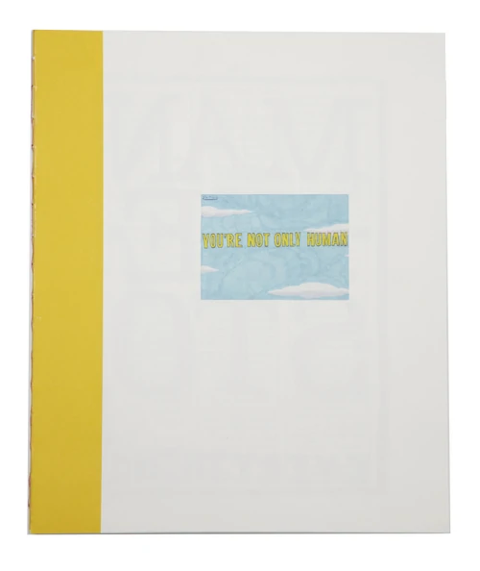
The Museum of Everything: Volume #4 – You’re Not Only Human
January 24, 2022The Museum of Everything: Volume #4 – You’re Not Only Human
Everything Ltd/The Museum of Everything
The Museum of Everything
I have collected a lot of catalogues over the years. Some for shows I’ve visited in person, and some for shows I simply wish I had visited. In 2013, I visited the Venice Biennale. It was pure serendipity that the inspiration (and title) for the 2012 iteration, curated by Massimiliano Gioni, was The Encyclopedic Palace: the concept first patented in 1955 by self-taught artist, Marino Auriti, of an imaginary museum “meant to house all worldly knowledge, bringing together the greatest discoveries of the human race, from the wheel to the satellite.”
Having focused a great deal on ‘outsider art’ during my Masters degree, I was bonkers thrilled to be able to see an exhibition carrying this much weight on the international level, blurring the lines between self taught and academic artists. Aside from the spectacle that was the main exhibition, one of the greatest finds for me was a tiny little pavilion set up outside by The Museum of Everything. Wandering through their set up of reproductions of work by Carlo Zinelli, mounted on pillars, I ended up at their bookstore/gift shop and found one of my most prized possessions to this day.
The Museum of Everything was launched by James Brett in Britain in 2010, and has quickly grown into an institution celebrating who they refer to as, “untrained, unintentional, undiscovered and unclassifiable artists of modern times”. This particular catalogue documents their fourth exhibition, which was presented at Selfridges, London from September 1 – October 25, 2011. The exhibition presented over 500 artists, including the first UK retrospective of Judith Scott – a personal heroine of art-making. The catalogue includes 225 pages of full colour works, organized into categories of studios. Prior to this catalogue, I had been aware of some of the more well known studios/organizations/institutions, like Creative Growth, Gugging and Creativity Explored, but the index provided me with a blueprint for places I would grow to research more, to study, to acquire works from, and to include in exhibitions I dreamt up. Each section includes reproductions of works, alongside statements by the studios they were created in, and cursory descriptions of the artists’ general oeuvre. The catalogue almost becomes a collection of manifestos of support for those creating outside of the academic tradition.
Included in the boxed set is The Appendix of Everything, featuring interviews with heavy hitters like Cindy Sherman, Massimiliano Gioni, David Byrne, and revered director of White Columns, Matthew Higgs. The collection of conversations is informal, accessible, and honest. Many quotes have stuck with me to this day. One in particular, was Higgs’ description of what he felt when he first encountered Creative Growth. “Art was being made for reasons that remained out of reach”. For me, this is the art I’ve developed a tidal wave of emotional reaction to. I look through this catalogue regularly, finding patterns, similarities, moments of clarity, and moments of joy.
You can acquire this catalogue by visiting the Museum of Everything’s website. Also note that there are now 7 catalogues for exhibitions curated by the Museum. ~ Lisa Kehler
Read More
Jimmie Durham
January 21, 2022Jimmie Durham
Essays by Laura Mulvey, Dirk Snauwaert, Mark Alice Durant, Kate Nesin
240 illustrations
London: Phaidon, 1995
Jimmie Durham (1940 – 2021) passed away last year, and it’s an appropriate time to consider his legacy and his art. This book from Phaidon was originally published nearly two decades ago, and has been reissued recently, with some updates and further considerations about the artist, his work, and the controversy that suffused his practice, especially around his claims of Cherokee descent.
From Library Thing: “Jimmie Durham is an internationally acclaimed artist, writer and poet of [alleged] Cherokee descent. His intricate sculptures and installations mimic the attributes of human beings and animals, and the ways they make or are made into history. Durham collages discarded objects and fragments of organic matter, transforming them with dazzling colour into startling, anthropomorphic configurations. His ersatz ethnographic displays deliver ironic assaults on the colonizing procedures of Western culture. An activist in the American Indian movement during the 1970s, he has also published poetry, fiction and critical theory. Featured at Documenta 9 (1992), his work has also been exhibited at the Whitney Museum of American Art, New York, and the Institute of Contemporary Arts, London. The Survey by British film and art critic Laura Mulvey, author of ‘Visual Pleasure and Narrative Cinema’ and other influential essays, explores themes of history and language, space and time in Durham’s work. Belgian curator Dirk Snauwaert talks with the artist about his multi-faceted practice. In the Focus, Mark Alice Durant, US performance artist and writer, analyzes Durham’s diary of Shakespeare’s Caliban. For Artist’s Choice, Durham has selected texts by Italo Calvino about the loss of speech and the poetry of the invisible. Artist’s Writings include essays, poems and a screenplay published here for the first time.”
Durham is a very contested figure, and his artwork falls within that narrative, too. The exhibition Jimmie Durham: At the Center of the World came to the newly opened Remai Modern in Saskatoon, Saskatchewan, Canada, in 2018 – at the same time that his claims of Cherokee heritage were being hotly contested. As one of the first shows in that gallery, in a place that has often been referred to as the ‘Alabama’ of Canada for its systematic racism, it fired a number of arguments (not the least of which spilled back on some of the critics of Durham, who are associated with the University of Saskatchewan, perhaps as projection from their own issues with institutional racism and attempting to appropriate Indigenous identity to further exploit those communities). At the Center of the World could be seen as the spark that lit that situation, which is still burning….
I cite that to show how Durham’s aesthetic and ideas merit a re examination as they engage with experiences and histories that are being played out in numerous sites around Canada, if not the world, and this book (considering with Durham’s recent passing that readers might contemplate Durham’s life as a whole) allows for his life and legacy to be considered in a more ‘complete’ manner.
I’m familiar with the original edition of the book, but there is an updated edition, from Phaidon, which you can see more about here. ~ Bart Gazzola
Read More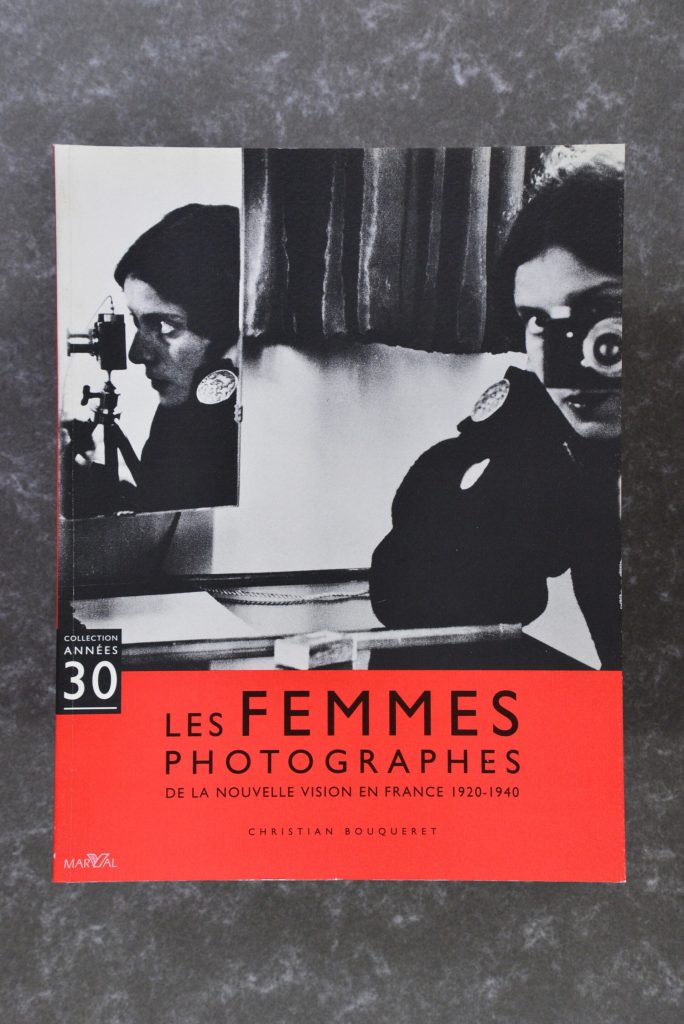
Les Femmes Photographes De La nouvelle Vision En France 1920-1940 | Christian Bouqueret, 1998
January 13, 2022Les Femmes Photographes
De La nouvelle Vision En France 1920-1940 | Christian Bouqueret, 1998
Nicéphore Niépce Museum (Chalon-sur-Saône, Saône-et-Loire); Museum of Art, History and Archeology (Evreux); French Mission of photographic heritage; French association for the dissemination of photographic heritage.
This is the accompanying text to the exhibition Women photographers of the new vision in France, 1920-1940, which was on display in numerous places in France, including Paris (Hôtel de Sully, April 3-June 7, 1998), Chalon-sur-Saône (Musée Nicéphore Niépce, June 19-September 13, 1998) and Evreux, Musée of the old Bishop’s Palace, October-November 1998).
The artists in this show and the book are an impressive group of photographers whose works are still groundbreaking and evocative, almost a century later. These include Berenice Abbott, Laure Guillot, Denise Bellon, Ilse Bing, Germaine Krull, Dora Maar, Lee Miller, Claude Cahun, Lisette Model, Marianne Breslauer, Yvonne Chevalier, Nora Dumas, Gertrude Fehr, Gisèle Freund, Florence Henri, Annelise Kretschmer, Ergy Landau, Juliette Lasserre, Thérèse Le Prat, Dora Kallmus / Madame d’Ora, Rogi André, Ré Soupault, Gerda Taro and Camilla “Ylla” Koffler.
Bouqueret’s writing is in French, but the images are – of course – the real joy of this book. After reading it, I spent endless hours online, looking for more works by these artists. Research is too formal a word, as these photographs pulled me into a different time, and it was a way, again, in which the availability of artists’ works online is a treasure.
In light of that, I must also recommend this site: AWARE (Archive of Women Artists, Research and Exhibitions), as they have many images and information about the artists featured by Bouqueret, and much more.
It can be ordered online here, though I acquired a copy through my local library. ~ Bart Gazzola
Read More
The Art of Richard Diebenkorn
December 18, 2021The Art of Richard Diebenkorn, 1997
Jane Livingston, with essays from John Elderfield and Ruth Fine (The University of California Press)
Forgive me for saying something positive about social media, but it’s allowed for a proliferation of art and images online (which is one of the motivating factors that helped create the Covert Collective); the art historian in me welcomes this, as on Twitter, for example, there’s numerous ‘art bots’ that have filled the sphere with many fine artworks – such as those of Richard Diebenkorn.
“Recognized as a major figure in postwar American painting, Richard Diebenkorn (1922-1993) was an artist strongly identified with California but whose work is beloved throughout the United States and the rest of the world. This catalog is the most comprehensive volume on the artist now available.
Jane Livingston’s extensively researched biographical essay covers Diebenkorn’s entire career and concentrates on the artist’s inner life and purposes as revealed in his paintings. Ruth Fine deals primarily with the figurative aspect of Diebenkorn’s work (1955-67), and John Elderfield concentrates on the Ocean Park period (1967-93). All three authors provide valuable insights based on their personal relationships with the artist and his widow, Phyllis. On both page and canvas, the reader can sense Diebenkorn’s complexity and highly self-conscious working methods, as well as his formidable integrity.
The Art of Richard Diebenkorn will give readers with an interest in all phases of modernism new thoughts about the relationship between abstraction and representation. Stunningly illustrated, with 192 full-color reproductions, this book is an exhilarating testament to a distinctive American artist.” (from the publisher, The University of California Press)
The essays are enjoyable and informative: but the majority of the book is defined by almost 200 full-colour reproductions and that’s why I recommend this book. From Diebenkorn’s still life paintings to his rough portraits to his ephemeral repeated meditations where place and abstraction intersect, this book is rife with beautiful images. “If painting doesn’t offer a way to dream and create emotions, then it’s not worth it”, to quote Pierre Soulages, a contemporary to Diebenkorn, and one can easily get lost among the many images of Diebenkorn’s in this book
This is hopefully to be found at your library (UC Press offers a space to request a copy for the same), or your locally owned bookstore. Since I mentioned social media in this Library suggestion, it would be remiss to not offer links to a Richard Diebenkorn #artbot on Twitter, as a teaser to encourage you to seek out this book.
~ Bart Gazzola
Read More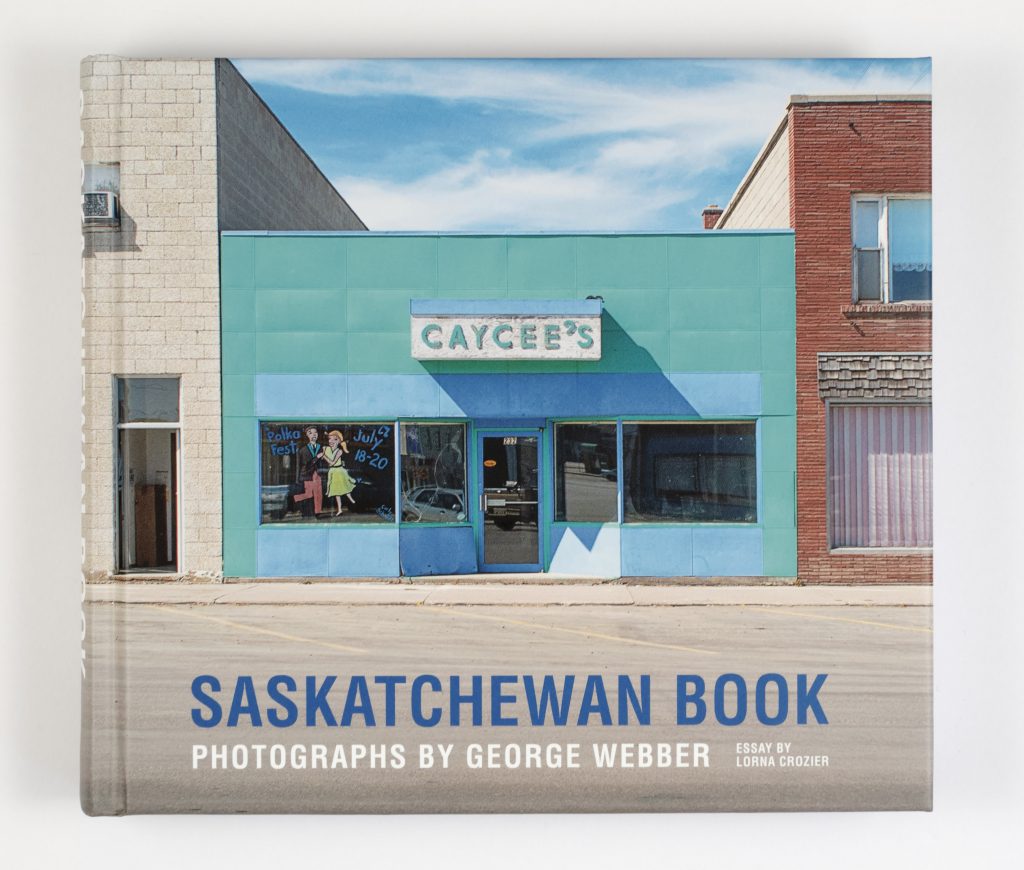
Saskatchewan Book: Photographs by George Webber
December 3, 2021Saskatchewan Book: Photographs by George Webber
Text by Lorna Crozier, Hardcover, 2020, 320 pages, $45.
Intentionally or not, the photographs George Webber made of rural Saskatchewan over the course of 30 years form a landscape typology. Beautifully portrayed in colour, his eye returns again and again to familiar prairie themes that invite comparison: faded signs, buildings in need of TLC (or more), and details of abandoned items left to decay. Although the particulars may change from scene to scene, there is an unavoidable thread that runs through the book: the wide-open skies of the prairies might go on forever, but traces of human settlement fade. You would not guess from Saskatchewan Book that the province has cities or that its population is growing. Instead, with every frame, Webber evokes memories of a way of life in a countryside eclipsed by urban living. It is an affectionate lament for the past.
Saskatchewan Book: Photographs by George Weber can be purchased here, at rmbooks.com.
Image + book review by Alan Bulley / @alanbulley
~ Rita Godlevskis
Read More
The Quilts of Gee’s Bend: Masterpieces from a Lost Place
November 5, 2021The Quilts of Gee’s Bend: Masterpieces from a Lost Place, 2002
Essays by John Beardsley, William Arnett, Paul Arnett and Jane Livingston, with an introduction by Alvia Wardlaw and a foreword by Peter Marzio (Tinwood Books, Atlanta in association with the Museum of Fine Arts, Houston)
In a conversation recently with a group of artists in Niagara-on-the-Lake, a question was raised about what is a dominant trend in the art world. I always find these kind of questions amusing – not in a derogatory way – as there are so many respective groups within even the Canadian art milieu that are often unaware of each other, or don’t acknowledge each other, that any singular dominant trend is an impossibility. Oftentimes, there are pockets of artists creating work that merit far more attention from other audiences, but that also seem quite happy to be making artworks for themselves, and larger recognition – or fame – will come to them, in time, if they even want these things.
The artists of Gee’s Bend are part of a unique community in the United States (more can be learned about them here). From the aforementioned link : “Throughout this time, and up until the present, the settlement’s unique patchwork quilting tradition that began in the 19th century has endured. Hailed by the New York Times as “some of the most miraculous works of modern art America has produced,” Gee’s Bend quilts constitute a crucial chapter in the history of American art and today are in the permanent collections of over 20 leading art museums.”
“At first glance, the quilts of this collection are simply stunning–rich colors in surprising combinations, refreshingly irregular geometric compositions with hardly a right angle among them, big blocks whose seams virtually vibrate with energy. Then consider the history of the community they come from, and these quilts become a stunning illustration of resourcefulness. Gee’s Bend, a remote peninsula on the Alabama River, is an isolated place, one that has known extreme poverty and struggle. Its quilters of the twentieth century are showcased here. Three insightful essays on the community’s history and its quilting tradition make up for a self-consciously scholarly introduction. The words of the quilters themselves follow. Brief accounts of their lives and thoughts on quilting accompany full-page photographs of their accomplishments. This large-format hardcover, and coinciding exhibition at the Whitney Museum of American Art, should guarantee the women of Gee’s Bend the prominence they deserve in the story of the American quilt.” (Marya Graff)
This book offers many beautiful images of the quilts, and a number of essays about the artists and their place in the history American art, positioning the quilts as work by amazing artists who are as impressive as any of their contemporaries that were showing in New York and being lauded by critics and curators.
Seek this out in your library, or your locally owned bookstore – and there’s a fine Instagram account that highlights Gee’s Bend artists, past and present, here.
~ Bart Gazzola
Read More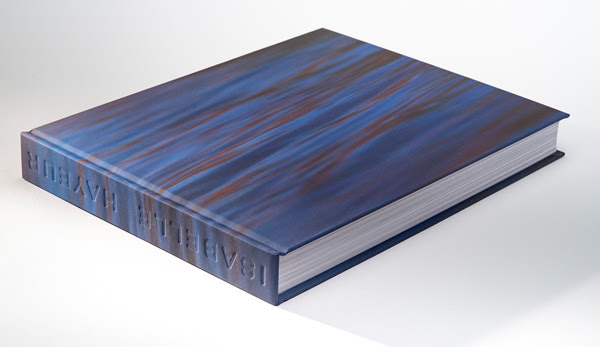
ISABELLE HAYEUR: Monograph
November 2, 2021ISABELLE HAYEUR: Monograph
By Mona Hakim, Peggy Gale, & Ann Thomas
Hardcover, 2020, 360 pages, available from Les éditions Plein sud
Texts in French and English $70 + Shipping
Committed to environmental causes since the 1990s, Isabelle Hayeur takes an acute critical look at the changes in our ecosystems caused by the devastating impacts of massive urbanization and industrialization on our territories.
This monograph, the most exhaustive publication to date on this artist’s work, leads us to the heart of her creative activity. Bringing together numerous visual documents, from her composite photo-graphs to portraits of citizen gatherings and activist groups by way of videos, installations in public spaces, and reflective texts, this richly illustrated book explores the vast production of an artist who has gained recognition in the contemporary art world, in Quebec and internationally. The texts present the reader with enlightened insights into the artist’s various accomplishments.
Read more about this monograph and order it here.
This recommendation appeared in the Fall 2021 – ECO ISSUE of PhotoED Magazine. If you’re looking for more Canadian photography inspiration check out PhotoED Magazine, in print + online https://www.photoed.ca
~ Rita Godlevskis
Read More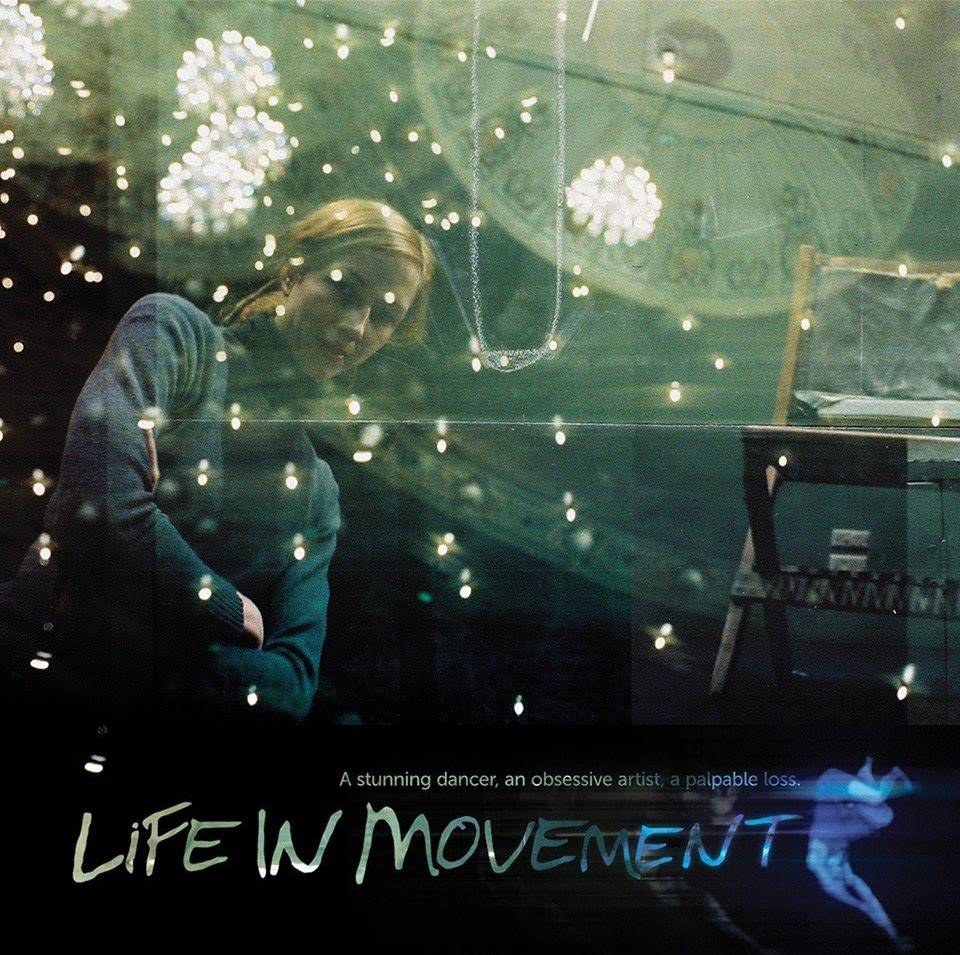
Life In Movement – The Tanya Liedtke story
November 8, 2021Life In Movement
2011
Closer Productions
I have 3 ½ left feet. As a sometimes musician I have a great sense of rhythm, but it has never been able to translate into my limbs. As a pre-teen and adolescent, I never knew anyone taking dance classes, never attended any recitals or ballets or other artistic events involving dance… in short, I am the last person you might think who would offer up Closer Productions’ Life In Movement as a documentary film that made such a difference in my artistic practice.
The multi-award-winning film focuses on Tanja Liedtke, the late choreographer of the Sydney Dance Company, who was killed at age 29 before she could take her position. A lauded professional dancer, Life in Movement documents Liedtke’s intentional cultivation of a creative life and her near obsessive process. The dance sequences she created seem to defy physics; she would push her dancers to their breaking points yet pushed herself even further.
Watching the film made me question my own motives as an artist. Liedtke was “all-in” to an extent that I could not emulate as a musician. My passion for photography was/is a completely different animal, and I poured everything I had into it. Life in Movement helped me to focus my intent and my path forward.
The documentary will bring joy, sadness, admiration and reflection to any artist who watches. It is NOT available for streaming in Canada but you can purchase a copy from the Closer Productions website. ~ Mark Walton
Read More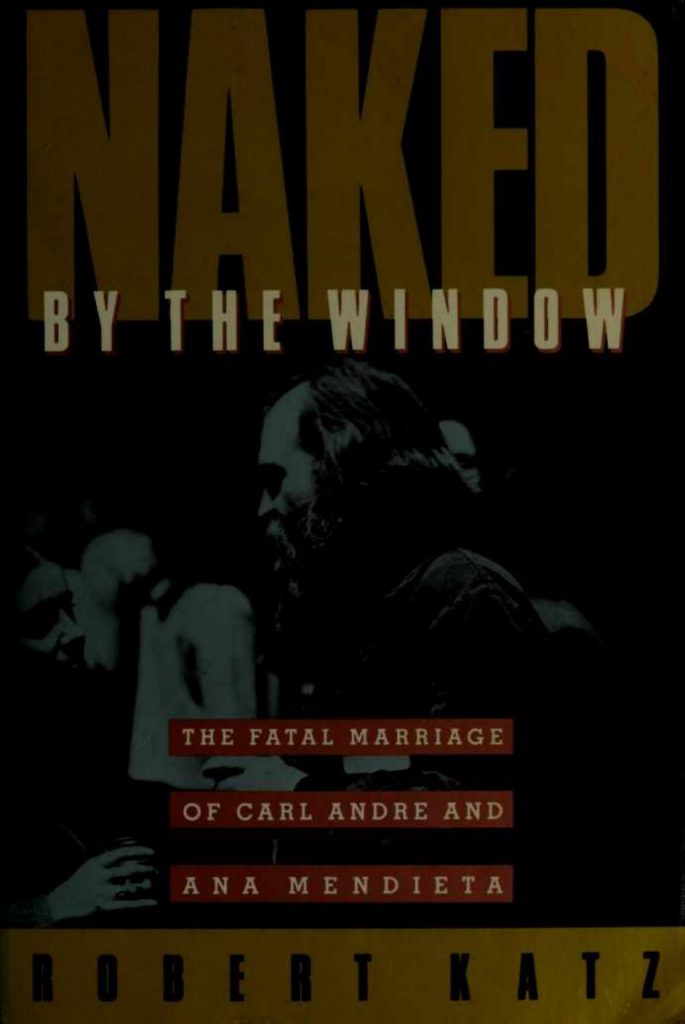
Naked by the Window: The Fatal Marriage of Carl Andre and Ana Mendieta
October 15, 2021Naked by the Window: The Fatal Marriage of Carl Andre and Ana Mendieta by Robert Katz
Considering the intensity around their relationship, the exponential growth of Ana Mendieta’s legacy and the fractious (perhaps overdue) repercussions resonating through the art world regarding institutional and more covert sexism, Naked by the Window: The Fatal Marriage of Carl Andre and Ana Mendieta by Robert Katz (1990) is a concise, factual book that eschews sensationalism for clarity.
A synopsis of the book offers a nod to this contested narrative: “In 1985, the charming, Cuban-born 36-year-old sculptor Ana Mendieta plunged to her death from the 34th-story Greenwich Village apartment she shared with her husband, the well-known and highly regarded artist Carl Andre”. Katz’ book “explores the turbulent personal and professional relationship between two highly regarded artists, drawing on numerous interviews and Mendieta’s papers to shed light on the mystery of her death.”
In 2015, Faheem Haider at Hyperallergic offered a response to the retrospective Carl Andre: Sculpture as Place 1958 – 2010 here that indicates how much – or how little – has changed in the four decades since Mendieta’s death. Haider is erudite but unflinching: Andre “was acquitted [of Mendieta’s murder], but the facts must be acknowledged in some way, whether as a curatorial position or a hard-line declaration. In the exhibition materials, in any statement related to this show, Mendieta — much less her death — is never mentioned at all.”
But art – like this book – exists outside galleries walls, too, and in 2010, a symposium titled Where Is Ana Mendieta? took place at NYU, marking the 25th anniversary of her death. This surely helped foment appropriate protest in response to Andre’s multi venue retrospective, as in May 2014, the feminist protest group No Wave Performance Task Force staged a protest in front of the Dia Art Foundation, ‘installing’ “piles of animal blood and guts in front of the establishment, with protesters donning transparent tracksuits with “I Wish Ana Mendieta Was Still Alive” written on them.” (Maria Crawford, from her article Crying for Ana Mendieta in response to the Carl Andre retrospective)
Katz’ book is well researched, well written and respectful of facts while not bending any of these truths to lead the reader (though he does offer an opinion, at the end, and it’s welcome in its lack of circumspection and resulting certitude).
Your local library or independent bookstore will surely have a copy, or can procure one for you.
~ Bart Gazzola
Read More
Recent Comments